Art World
In Her First U.S. Retrospective, Vivian Maier Proves to Be Much More than a Street Photographer
At New York’s Fotografiska, the "nanny photographer" gets her greatest showing yet on these shores.
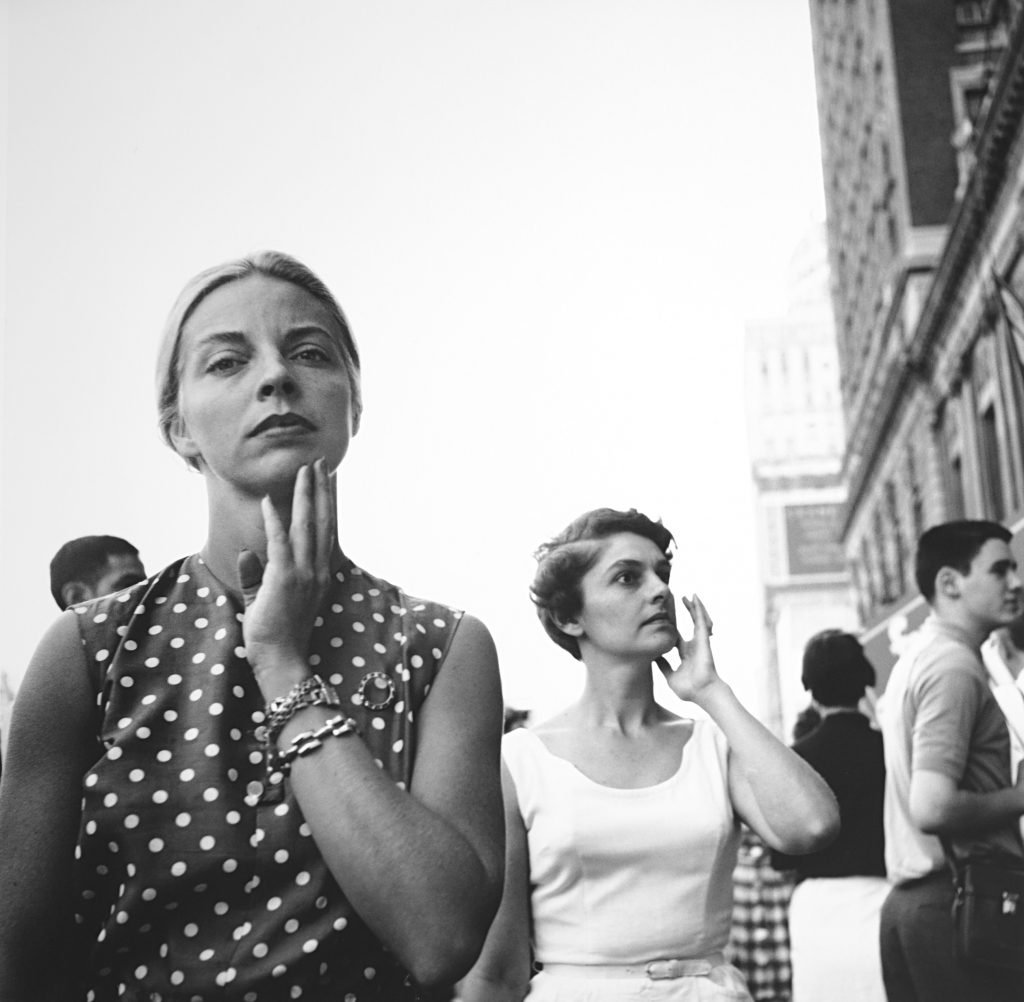
In 2011, a new art star burst onto the scene. A nanny and a self-taught photographer, Vivian Maier had roamed the streets of New York City and Chicago in the 1950s, ‘60s, and ‘70s, her pint-sized charges in tow, snapping pictures of derelicts and swells, skyscrapers and train yards, naked mannequins and discarded dolls.
She had taken hundreds of thousands of these photos. She stashed them in a storage unit until she couldn’t afford the payments any longer. She died destitute in 2009, at the age of 83. But then a young real estate developer named John Maloof bought the contents of her locker at a Chicago auction, scanned what he found, and uploaded it to Flickr.
Breathless accolades, gallery shows, a copyright dispute, and even an Oscar-nominated documentary followed.
Photo enthusiasts responded to her funny pictures of rich ladies wearing luxe furs and mean scowls, her candid images of bums and bankers sleeping on park benches, her empathetic yet unsentimental portrayals of children, her enigmatic self-portraits.
Moreso, they marveled at her remarkable story.
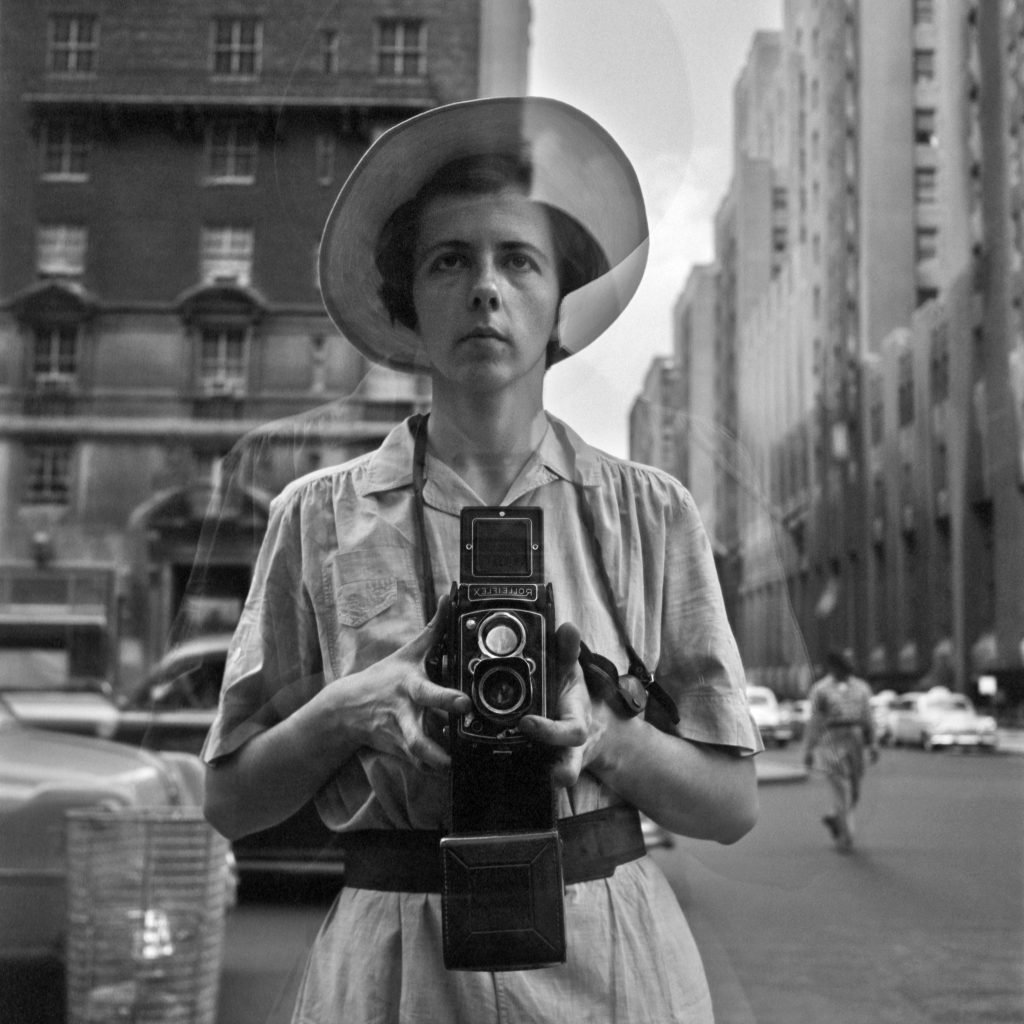
Vivian Maier, Self-Portrait, New York, NY, 1954. © Estate of Vivian Maier / Courtesy Maloof Collection / Howard Greenberg Gallery, NY.
Now, Fotografiska in New York City has opened the first major museum retrospective in the United States dedicated to this mysterious artist, who was—it turns out—more than a street photographer.
“Vivian Maier: Unseen Work” (through Sept. 29), which debuted at Paris’ Musée du Luxembourg in 2021, features approximately 230 items, including vintage and modern prints, black-and-white and color photographs, Super 8 footage, contact sheets, and audio recordings.
“My aim was to give a complete overview of the work,” said the show’s curator, Anne Morin of Madrid-based cultural management company diChroma Photography. In addition to her beloved street pictures, there are abstract experiments with light and shadow (often done in collaboration with the children she cared for), extreme close-ups of wrinkled hands and newspaper headlines, and complicated self-portraits using a variety of mirrors and reflections.
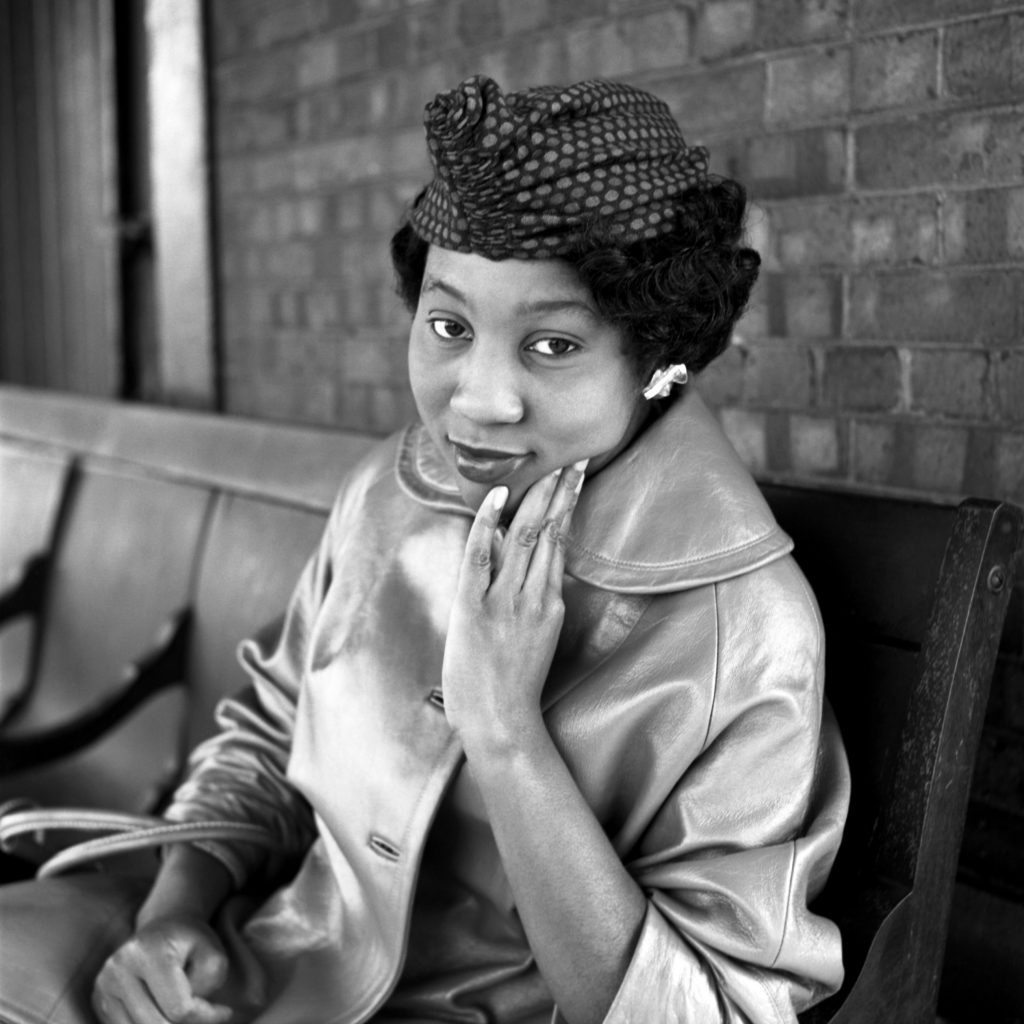
Vivian Maier, Chicago, IL (1957). © Estate of Vivian Maier / Courtesy Maloof Collection / Howard Greenberg Gallery, NY
When she first embarked on the project 15 years ago, she explained, “We had a goal, which was to set her name in the history of photography near the main monsters: Robert Frank, Henri Cartier-Bresson. And no question: she’s seated and well-settled.”
Born in the Bronx in 1926, Maier spent much of her childhood between New York City and France. She got her first Brownie camera as a kid. In 1951 she was hired as a governess in New York, and in 1956 she moved to Chicago and continued to nanny for several families for the next few decades. Her job allowed her time and money to pursue her passion for taking pictures, which she often did while on the clock.
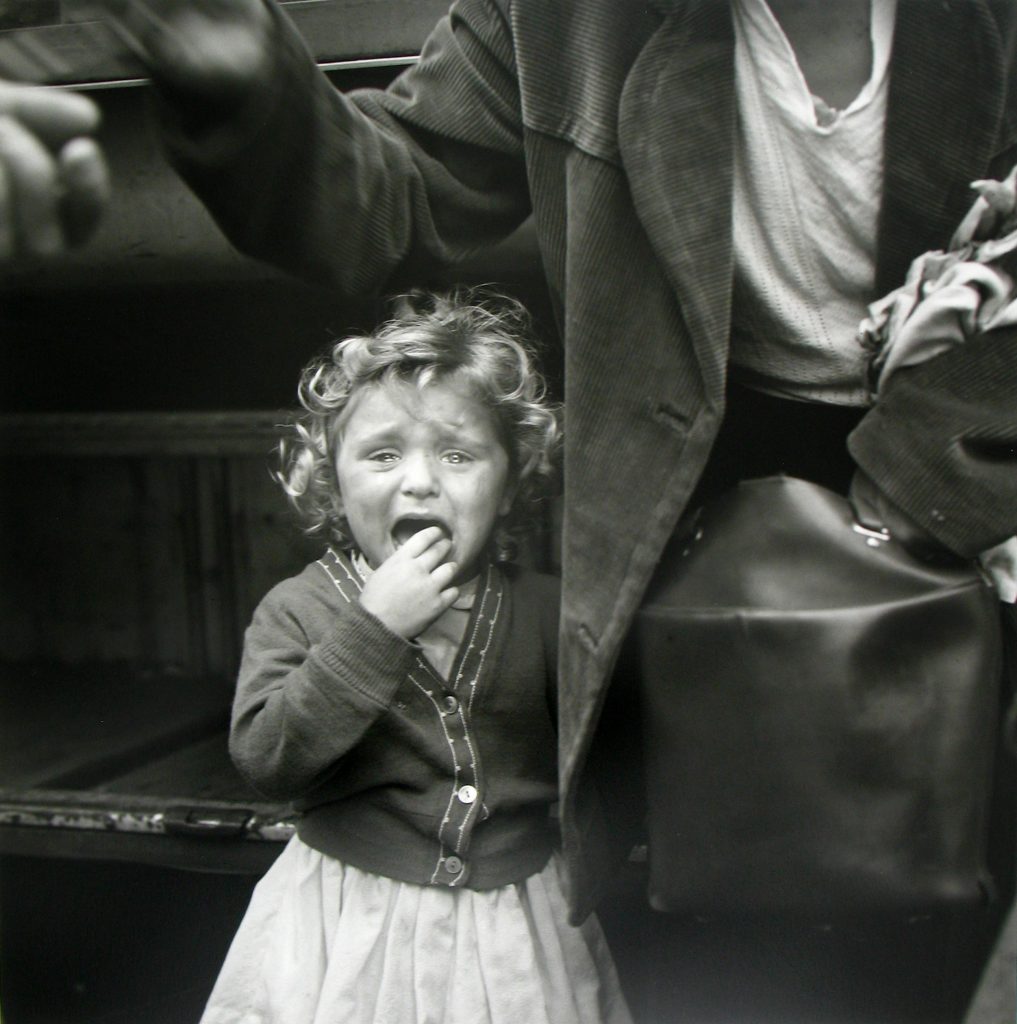
Vivian Maier, Grenoble, France (1959). © Estate of Vivian Maier / Courtesy Maloof Collection / Howard Greenberg Gallery, NY.
Her street photos have a certain frankness. Probably because she was poor herself, she portrayed the poor and vulnerable without sentimentality: a toothless elderly woman, smiling warmly at the camera, or an older, bespectacled man struggling to read the paper. She often showed contempt for the rich: a garishly dressed woman with too much makeup yelling at a driver, a suited businessman caught mid-yawn.
She sometimes displayed a prurient, or maybe puritan, streak. For example, she filmed the outside of an adult cinema with her Super 8 camera, documenting the men sheepishly, skittishly contemplating buying a ticket before going inside.
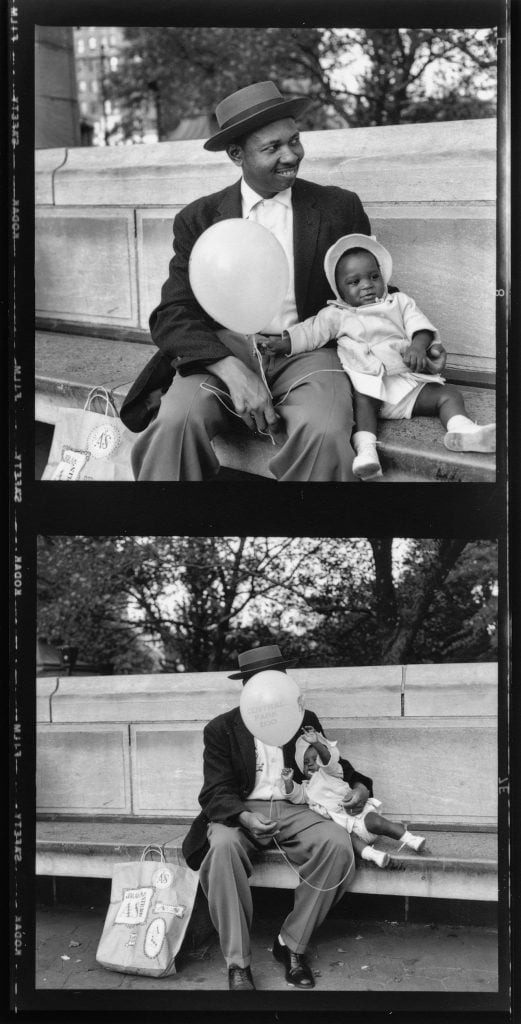
Vivian Maier, Central Park<?I> (1959). © Estate of Vivian Maier / Courtesy Maloof Collection / Howard Greenberg Gallery, NY.
Yet, she seemed to appreciate beauty, too: a young brunette with cat-eye makeup holding a fluffy black cat; Lena Horne, radiant in pearls; all manner of couples holding hands.
“Vivian Maier had the faculty and capacity to just take the extraordinary in the banality of daily life,” Morin said, citing a Victor Hugo quote: “The extraordinary is in the deep of the ordinary.”
“I think she was collecting the world in which she was living,” she continued. “She was doing a kind of portrait of her time. She was a pack rat: she was collecting little moments that completely escaped [most people’s vision].”
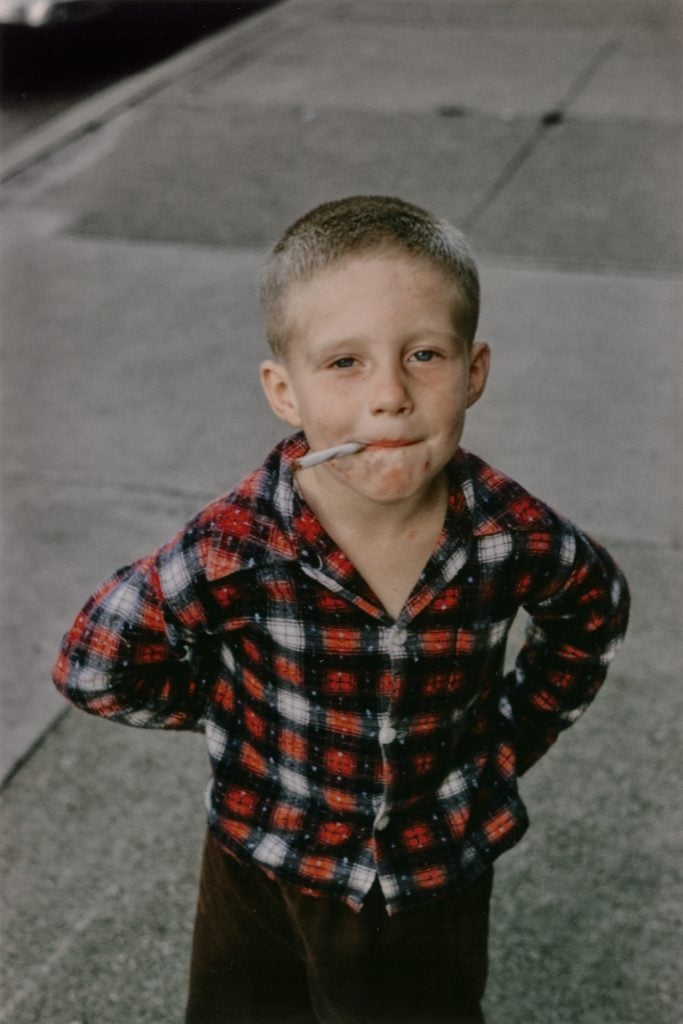
Vivian Maier, Untitled (1958). ©Estate of Vivian Maier, Courtesy of Maloof Collection and Howard Greenberg Gallery, NY.
And yet, what struck me most about this exhibition is not Maier’s skill as a documentarian, but rather the guileless experimentation and enthusiasm that characterizes so much outsider art. Howard Greenberg, whose gallery represents Maier’s work in New York, agreed. “Vivian Maier is one of the great outsider artists,” he told me.
Like other self-taught artists, such as Henry Darger or Judith Scott, Maier was always, compulsively, creating. Her early self-portraits using mirrors, reflections, and shadows were experiments in lighting and special effects. Later, when she moved to Chicago, she urged the children she nannied to pose behind sheets, to blow bubbles, or to hide in concrete tubes so she could try to show their shadows, their kinetic motion, their gleeful energy. These photos don’t all work, but they capture, more than a moment, the very magical, radical act of photographing itself: the joy of holding a camera up and going “click.”
Maier stopped taking pictures entirely sometime in the 1990s. She had switched to color photography and her images got more abstract as time went on. She was unhoused for a while. At some point in the 2000s, three of the boys she had taken care of in Chicago moved her into a nice apartment and checked in on her until her death.
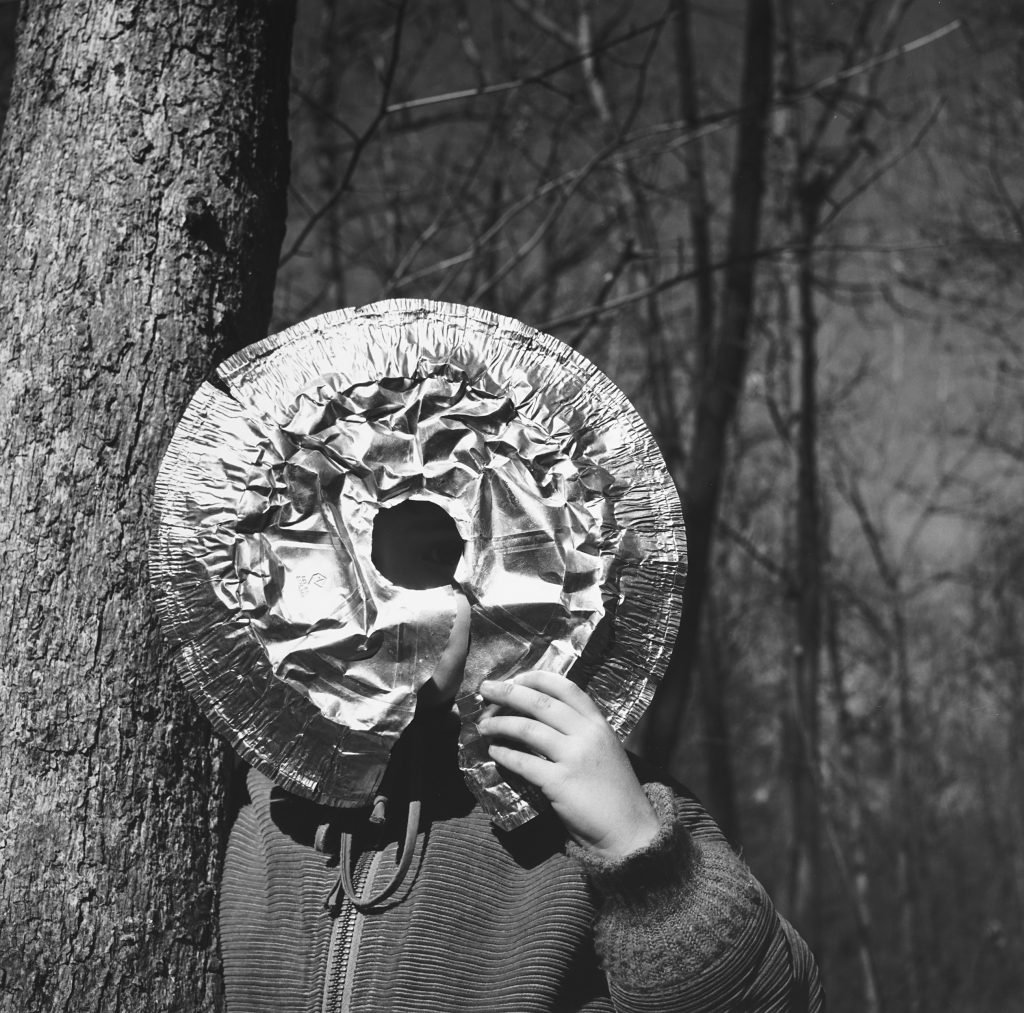
Vivian Maier, Chicago area, IL, 1961. ©Estate of Vivian Maier, Courtesy of Maloof Collection and Howard Greenberg Gallery, NY.
What would Maier make of her discovery? Her fame? “I don’t think she would be happy,” said Greenberg. “She may have wanted or liked the attention when she was younger, but not by the end.”
Maier certainly didn’t seem to seek the spotlight. She rarely printed her work. She barely looked at the hundreds of thousands of pictures she took. After a certain point, she didn’t even bother developing her film.
Perhaps she couldn’t afford it. Perhaps it was too much of a hassle. Perhaps it wasn’t even the pictures that were that important to her, but the act of taking them: the way it encouraged a new way of seeing, of looking, and of being in a world—as a woman and as an outsider.
“Vivian Maier: Unseen Work” is on view at Fotografiska New York, 281 Park Avenue South, through Sept. 29.





